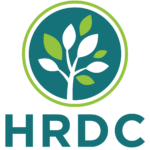Streamline plays a key role in reducing our community’s overall carbon emissions now and in the future. By design, public transit reduces the number of single occupancy vehicles on our streets, which in turn decreases our community’s overall tail-pipe emissions. Since tail-pipe emissions are the largest contributor to greenhouse gases, Streamline is needed now more than ever. Thus, HRDC and Streamline staff have developed short- and long-term goals that demonstrate Streamline’s commitment to ensuring a sustainable future for the Gallatin Valley.

Streamline’s short-term sustainability goals are all centered around increasing ridership. More riders on Streamline leads to fewer vehicles on our roads and reduced tail-pipe emissions in our community.
Streamline’s long-term goals are focused on adapting new sustainable infrastructure and technology as well as coordinating with local governments on transit-friendly developments and land use policies.

Sign up for our eNewsletter and start receiving rider alerts, route and schedule changes, and the latest news and announcements from Streamline right in your inbox.

HRDC has been helping our neighbors in need across the Gallatin Valley and beyond for nearly 50 years. Whether through introducing public transportation services, or working to ensure no one has to go to bed hungry and everyone has a warm, safe place to sleep, we strive to build a better community.
Visit thehrdc.org to learn more about HRDC’s services.
© 2023 Streamline Transit. All Rights Reserved.

Jennifer has served Gallatin County in different capacities for years. Her career has focused on water resources, city planning and public land management. She has served on various boards, while also working with many community-centered organizations.